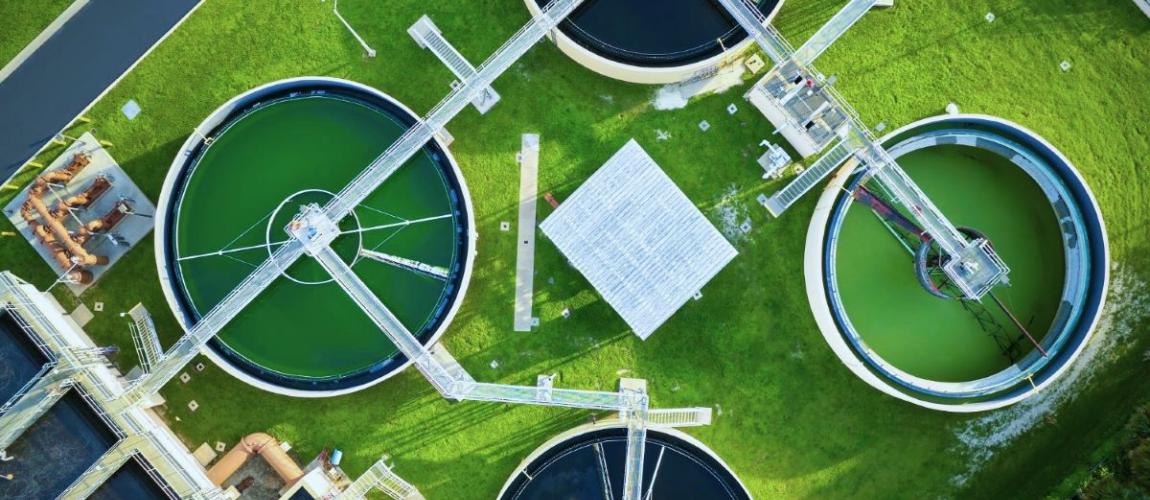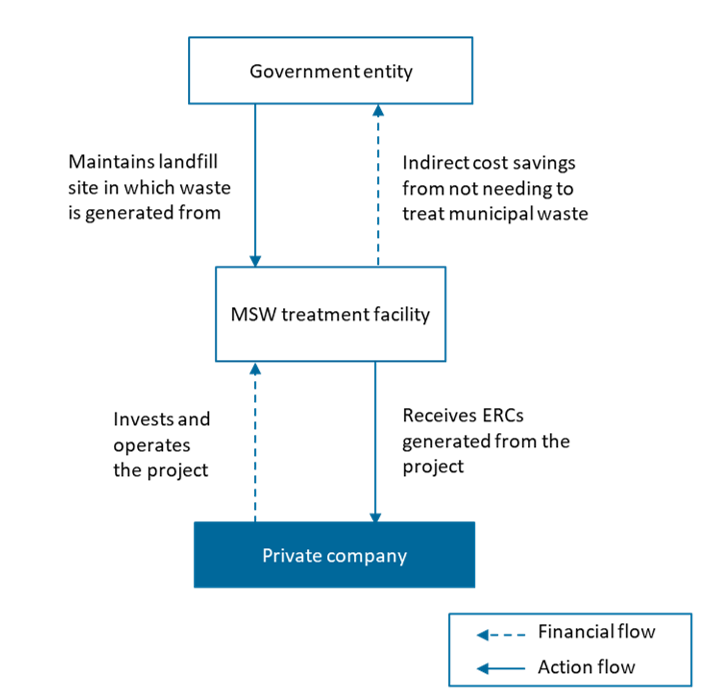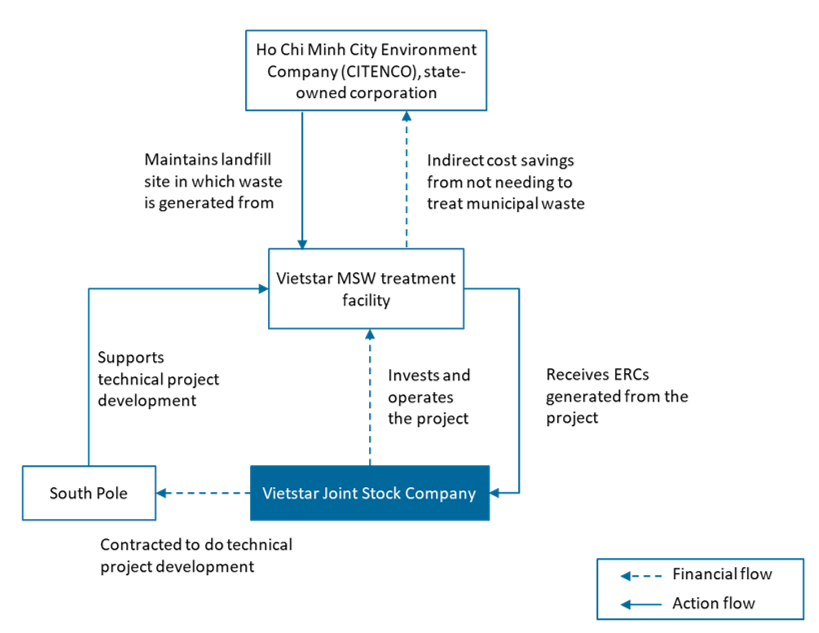Waste Treatment Facility Model for ERP

Photo Credit: Image by Freepik
On this page: Waste Treatment Facility leveraging a Existing-Build-Finance-Bulk-Tariffs model - Model 10 in the ERP Project Guidelines. Read more below, or visit Strategic Guidance for Country System Assessments, Guidance for Countries in Assessing ERC Projects, or Mobilizing ERC Finance.
Project Type: Landfill gas
Sector: Waste
Applicable Project Methodology: AM0025 – Avoided emissions from organic waste through alternative waste treatment processes
This project type aims to reduce methane emissions by setting up and running composting facilities. These facilities will treat organic matter obtained from municipal waste. The project's core activities include pre-sorting and categorizing municipal solid waste (MSW), recycling plastic waste, and subjecting the organic portion to thermal-aerobic treatment. The primary objective of the project is to generate aerobic compost from MSW, which would otherwise undergo anaerobic decomposition in waste landfills.
The project will be leveraging a Existing-Build-Finance-Bulk-Tariffs model. An experienced waste treatment operator is provided the concession to receive pre-agreed daily volumes of waste from the government or state-owned entity landfill operator, in lieu of landfill tipping at no charge. The private sector entity in this case will be raising financing and building the waste treatment facility, after which the investment will be recovered through the sale of the by-products (e.g. compost material), as well as through the emission reduction credits (ERCs) generated and sold in the voluntary carbon markets. Table 1: Model Attributes Business New This model assumes that the government or state-owned entity grantor will be granting a concession to an experienced waste treatment operator, potentially through a competitive bidding process. Existing Construction Build The project involves the build of the new waste treatment facility in the vicinity of the landfill operated by the grantor. Refurbish Private Funding Finance The project company will be charged with raising financing for the new installation, both from financial institutions as well as the voluntary carbon markets. Service Bulk Revenues of the project company will be sourced from contracted bulk purchasers of the waste treatment’s by-products. User Revenues Fees Revenues in this model will be driven by the tariffs paid to the project company for the by-products produced by the waste treatment facility. Tariffs Proposed risk allocation of the Public Private Partnership Model Key features of PPP structure Expected ERC end use Key considerations/risks for proposed project Figure 1: Financing and Activity Flows for the Model Project description The project will reduce methane emissions by establishing and operating composting facilities to treat organic matter collected from municipal waste. The total designed capacity of 432,000 tons of solid waste per year with daily waste reception of 1200 tons and the proposed product of organic compost as 53,568 tons annually. Targeted results Expected annual ERCs generated from the program will be 181,492 tonnes. Figure 2: Structure of Case Study PPP Vietstar Joint Stock Company, the project owner, operates a Public Private Partnership (PPP) with the Ho Chi Minh Department of Natural Resources and Environment (DONRE) via waste treatment contract signed between the two entities, agreed at $51 per tonne of waste treated. Assuming a similar project parameter as the case study, the project’s Net Present Value (NPV) without ERC in- and outflows – only considering non-ERC inflows through other revenue streams or cost savings enabled by the project – is $1.18 million (M), while the NPV of ERC in- and outflows alone is $6.68M, reflecting the significant value that generating ERCs from the project will bring. Considering all ERC and non-ERC cashflows, the project’s NPV is $7.87M, approximately 6.5 times of the NPV without ERC cashflows, which demonstrates a strong case for such project archetypes to consider generating ERCs. Table 2: Summary of sources of inflows and outflows and key assumptions ERC revenues or inflows Average Gold Standard (GS) price of waste disposal in Asia from Allied Offsets database (2022) Non-ERC revenues or inflows Project Design Document (PDD) of the case study Investment cost PDD of the case study Project implementation PDD of the case study ERC generation Gold Standard Fee Schedule Table 3: Net cashflows summary (in USD) ERC Component Revenues/Inflows 0 17,520,105 17,520,105 Costs/Outflows -17,000 -483,732 -500,732 Net value -17,000 17,036,373 17,019,373 Primary/Non-ERC Component Revenues/Inflows 0 74,002,500 74,002,500 Costs/Outflows -36,000,000 -11,412,500 -47,412,500 Net value -36,000,000 62,590,000 26,590,000 Net Present Values NPV $7,868,052 NPV (ERC Component) $6,683,357 NPV (Non-ERC Component) $1,184,696 Footnote 1: All prices are expressed in United States Dollars (USD)Proposed Structure of this Public Private Partnership (PPP) Model
Dimension
Attribute
Description


Case study: Vietstar Municipal Solid Waste Treatment Facility, Vietnam
The proposed project activity involves the pre-sorting, classification of municipal solid waste (MSW), recycling of plastic waste and thermal-aerobic treatment of the organic fraction utilizing LEMNA composting technology. The main purpose of the proposed project is to produce aerobic compost from MSW that would have been left to decay anaerobically in waste landfills.
Summary of the model financials
Value component
Assumptions
Sources
Components
Sum of initial outlays
Sum of in- or outflows from crediting period
Total cashflow
This section is intended to be a living document and will be reviewed at regular intervals. The Guidelines have not been prepared with any specific transaction in mind and are meant to serve only as general guidance. It is therefore critical that the Guidelines be reviewed and adapted for specific transactions. Unless expressly stated otherwise, the findings, interpretations, and conclusions expressed in the Materials in this Site are those of the various authors of the Materials and are not necessarily those of The World Bank Group, its member institutions, or their respective Boards of Executive Directors or member countries. For feedback on the content of this section of the website or suggestions for links or materials that could be included, please contact the PPPLRC at ppp@worldbank.org.
Updated: June 4, 2024
TABLE OF CONTENTS
UNLOCKING GLOBAL EMISSION REDUCTION CREDIT
Guidance for Countries in Assessing ERC Projects
1. Introduction to Emission Reduction Credits
• The World Bank's Emission Reduction Program
•Classification of Emissions Reduction Credit
• Policy Context of Emissions Reduction Credit
2. Objective of the Guidance for Countries in Assessing ERC Projects
• Objective of Project Preparation Guidelines
• Introduction to the Project Assessment Framework
• Process to Conducting Assessments
• S1: Green Economy Priorities
• S3: Article 6 Readiness and Eligibility
4. Conducting the Initial Profiling and Making a Preliminary Decision
• F2: Additional Value Enabled by Project
• C1, C2, and C3: Carbon Integrity and Environmental and Social Risk Management
5. Conducting the Project Assessment and Making the Final Decision
• F1: Project ERC value and F2: Additional Value Enabled by Project
• Q2: Marketing, Sales, and Pricing
• Q3: Project Governance and Structure
• C2: Environmental Risk Management
• C3: Social Risk Management and Benefits
6. Further Guidance for Application
• Country Context-driven Factors
• Considerations for Future Scope
Abbreviations: Guidance for Countries in Assessing ERC Projects
• B: Project Assessment Template
- Model 1: MRT Energy Efficiencies Model for ERP
- Model 2: Rural Electrification Model for ERP
- Model 4: Rooftop Solar Installation Model for ERP
- Model 5: LED Streetlight Deployment Model for ERP - for Specific Technologies
- Model 6: E-bus Deployment Model for ERP
- Model 7: EV Charging Systems Installation Model for ERP
- Model 8: Biodigesters Deployment Model for ERP
- Model 9: Waste-to-Power Model for ERP
- Model 10: Waste Treatment Facility Model for ERP
- Model 11: Climate Smart Farming Deployment Model for ERP
- Model 12: Reforestation Program Model for ERP